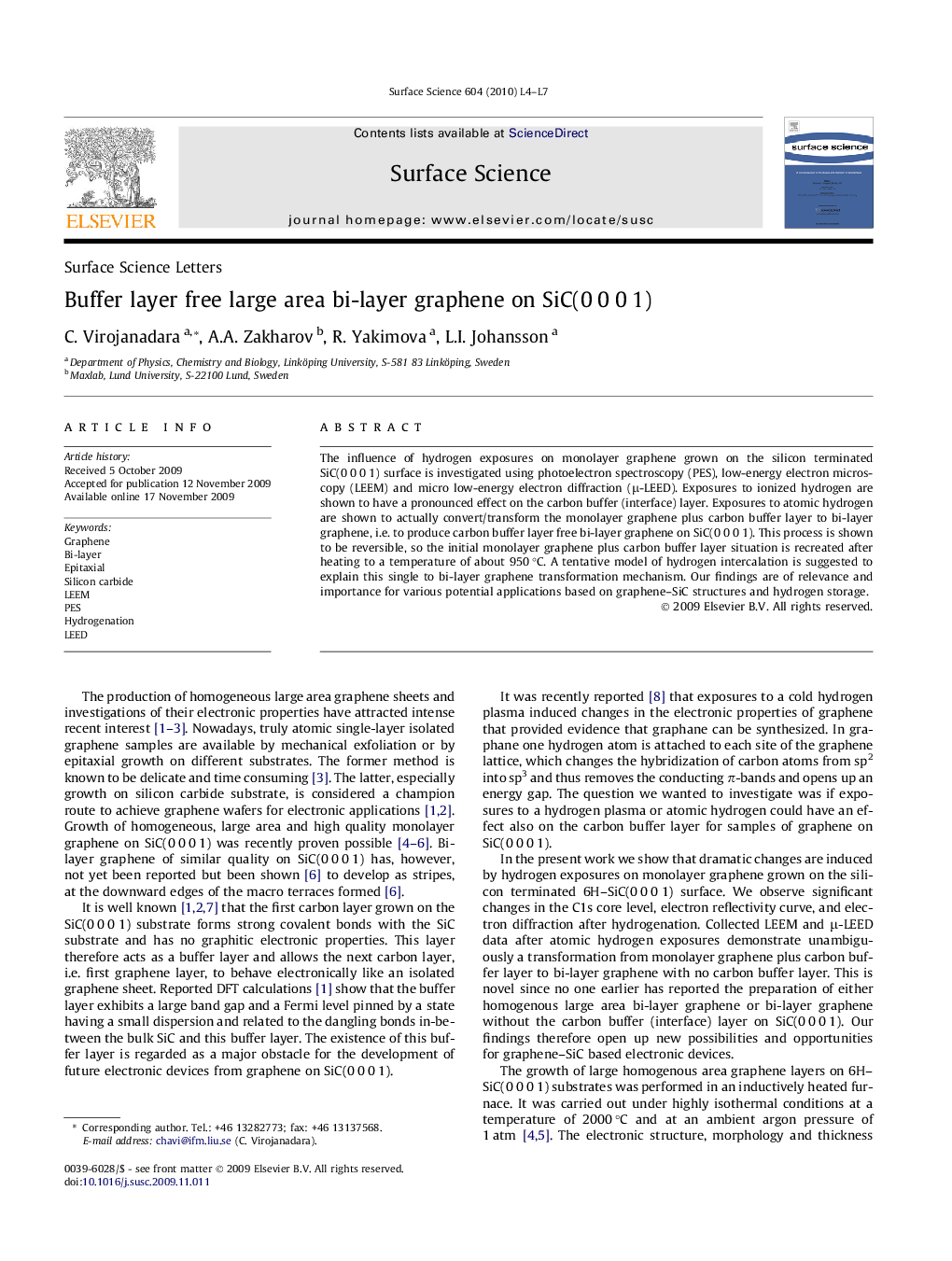| Article ID | Journal | Published Year | Pages | File Type |
|---|---|---|---|---|
| 5424329 | Surface Science | 2010 | 4 Pages |
Abstract
The influence of hydrogen exposures on monolayer graphene grown on the silicon terminated SiC(0 0 0 1) surface is investigated using photoelectron spectroscopy (PES), low-energy electron microscopy (LEEM) and micro low-energy electron diffraction (μ-LEED). Exposures to ionized hydrogen are shown to have a pronounced effect on the carbon buffer (interface) layer. Exposures to atomic hydrogen are shown to actually convert/transform the monolayer graphene plus carbon buffer layer to bi-layer graphene, i.e. to produce carbon buffer layer free bi-layer graphene on SiC(0 0 0 1). This process is shown to be reversible, so the initial monolayer graphene plus carbon buffer layer situation is recreated after heating to a temperature of about 950 °C. A tentative model of hydrogen intercalation is suggested to explain this single to bi-layer graphene transformation mechanism. Our findings are of relevance and importance for various potential applications based on graphene-SiC structures and hydrogen storage.
Related Topics
Physical Sciences and Engineering
Chemistry
Physical and Theoretical Chemistry
Authors
C. Virojanadara, A.A. Zakharov, R. Yakimova, L.I. Johansson,
